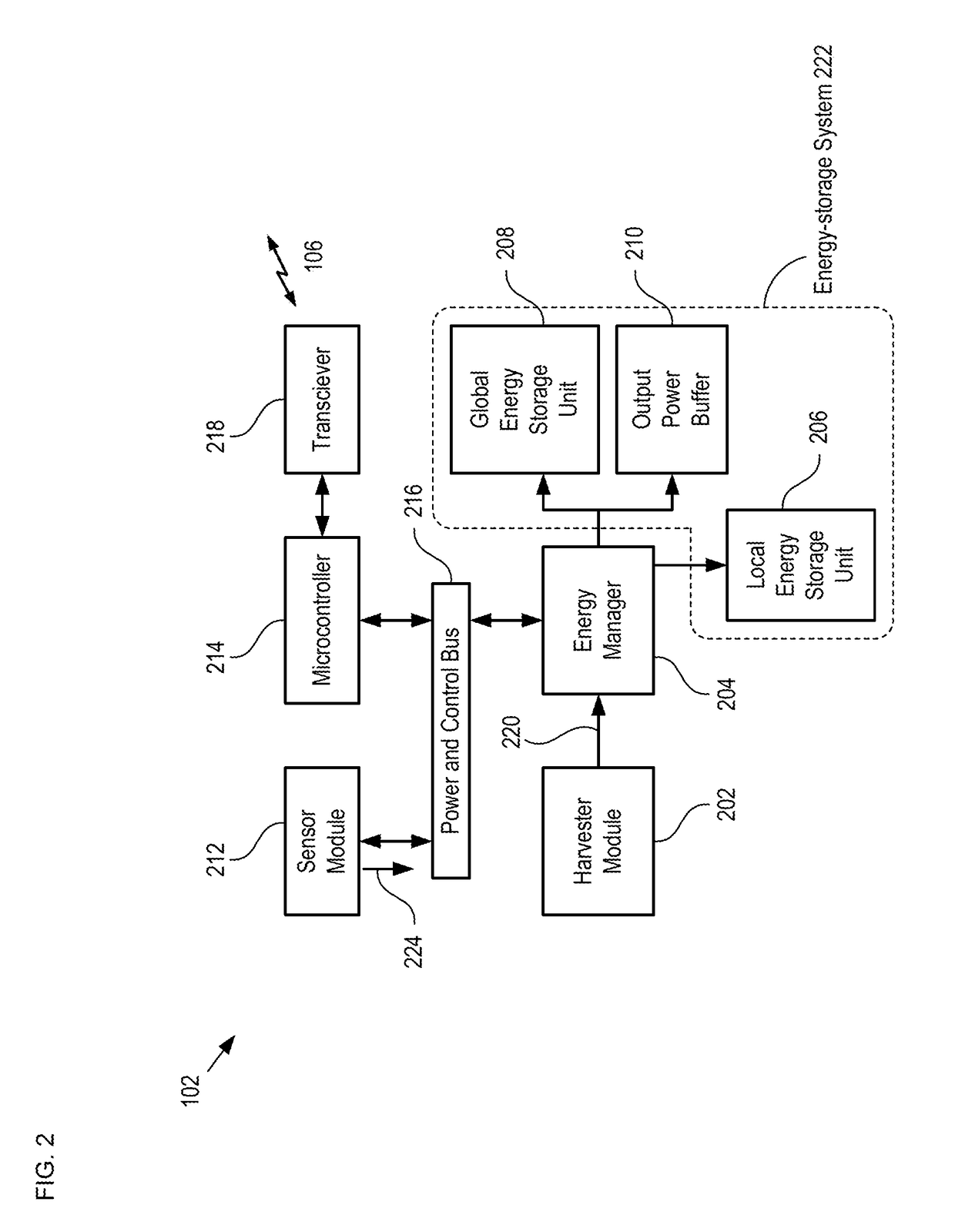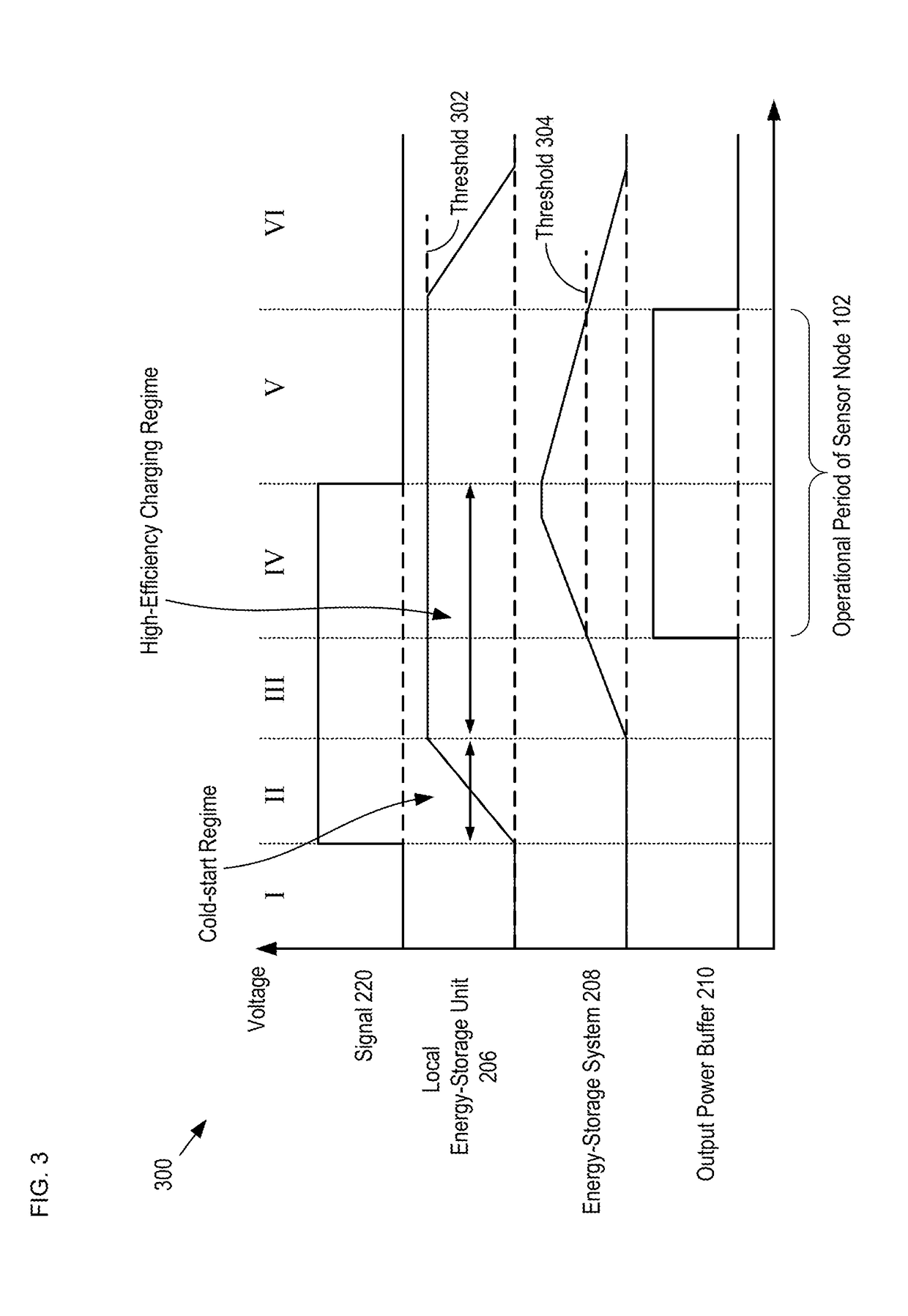Energy-harvesting sensor system and method therefor
a sensor system and energy harvesting technology, applied in the field of self-powered sensor systems, can solve the problems of high maintenance cost of battery-powered systems, inability to connect remote sensors to the power grid, and inability to use conventional energy harvesters available today to remote sensor nodes
- Summary
- Abstract
- Description
- Claims
- Application Information
AI Technical Summary
Benefits of technology
Problems solved by technology
Method used
Image
Examples
Embodiment Construction
[0027]FIG. 1 depicts a schematic drawing of a sensor system in accordance with an illustrative embodiment of the present invention. System 100 includes sensor nodes 102-1 through 102-N and base station 104.
[0028]Sensor nodes 102-1 through 102-N (referred to, collectively, as sensor nodes 102) are self-powered sensor platforms capable of monitoring the occupancy of a region within a building by periodically measuring a plurality of environmental conditions and wirelessly reporting the resultant data to base station 104 as signals 106-1 through 106-N, respectively. An exemplary sensor node is described in detail below.
[0029]Base station 104 is a general purpose processor operative for acting as a gateway by communicating with sensor nodes 102 and issuing alerts and commands to sensor nodes 102 and other systems (e.g., light controllers, heating / air conditioning systems, etc.) based on signals 106-1 through 106-N (referred to, collectively, as signals 106). Typically, base station 104 ...
PUM
 Login to View More
Login to View More Abstract
Description
Claims
Application Information
 Login to View More
Login to View More - R&D
- Intellectual Property
- Life Sciences
- Materials
- Tech Scout
- Unparalleled Data Quality
- Higher Quality Content
- 60% Fewer Hallucinations
Browse by: Latest US Patents, China's latest patents, Technical Efficacy Thesaurus, Application Domain, Technology Topic, Popular Technical Reports.
© 2025 PatSnap. All rights reserved.Legal|Privacy policy|Modern Slavery Act Transparency Statement|Sitemap|About US| Contact US: help@patsnap.com



